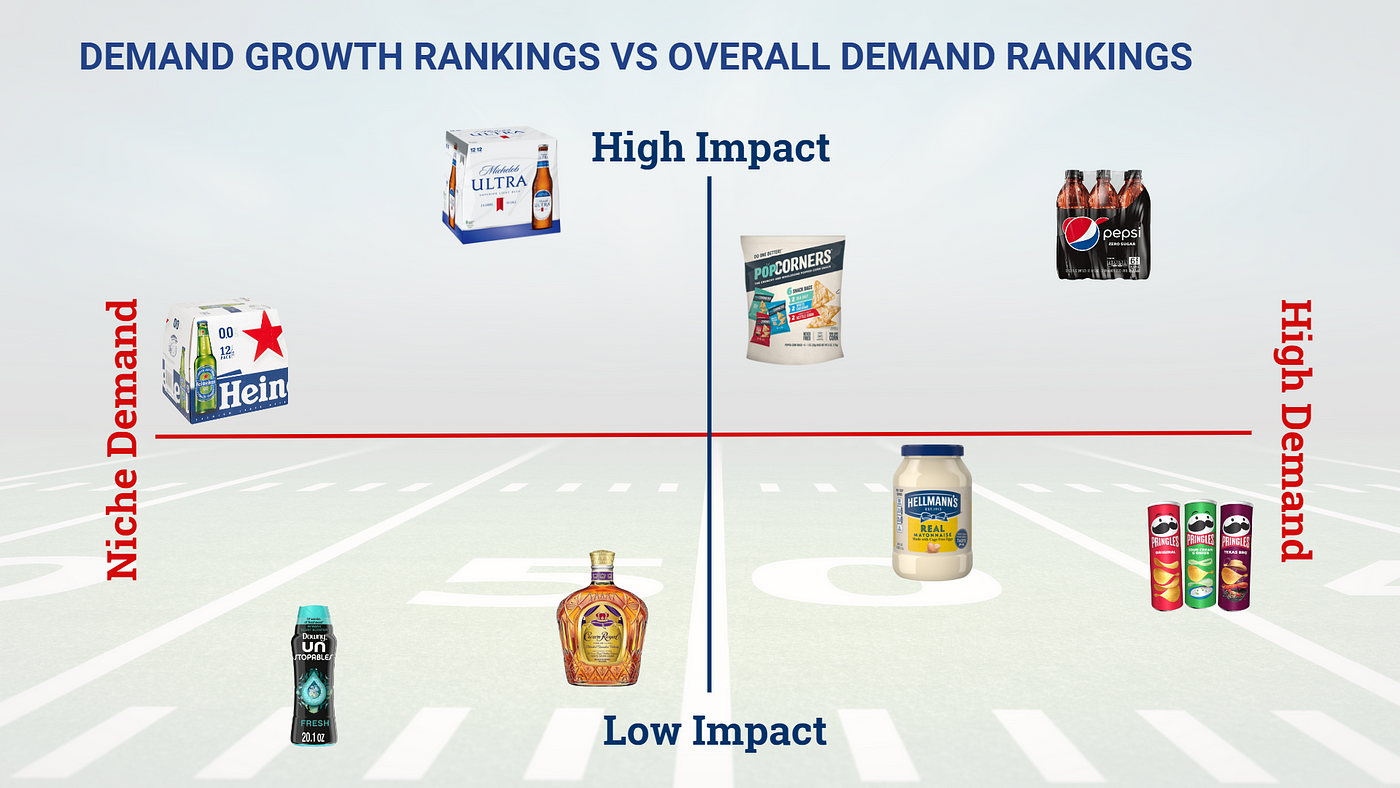Which Brands Won the Super Bowl?
This blog post summarizes Veylinx’s 2023 study that measured Super Bowl LVII advertisements’ impact on consumer demand. For more details, watch the Veylinx webinar “Which Brands Won the Super Bowl?” or reach out to us here.

In 2023, companies spent $7 million on average for a 30-second ad at Super Bowl, according to Statista. The question arises: was it worth it? It must be, right!? We at Veylinx let the numbers speak for themselves.
Using Veylinx’s proprietary methodology — which measures actual demand rather than intent — we conducted a study that tested purchase behavior the week before the Super Bowl and the week after. The research focused on measuring the change in consumer demand for eight brands with Super Bowl ads: Michelob Ultra, Heineken 0.0%, Hellmann’s Mayo, Downy Unstopables, Crown Royal Whisky, Frito-Lay PopCorners, Pringles and Pepsi Zero Sugar. The results show that 2023 Super Bowl advertising fueled a 6.4% average increase in demand among viewers.
Super Bowl Advertising Winners Based on Change in Demand:
-
Michelob Ultra — 19% increase in demand
-
Pepsi Zero Sugar — 18% increase in demand
-
Frito-Lay PopCorners — 12% increase in demand
-
Heineken 0.0% — 11% increase in demand
The overall increase in consumer demand was largely driven by women, who accounted for a 21% increase in demand growth. The commercials had minimal impact on men, yielding just 1% demand growth for the brands tested. Gen Z viewers were largely unimpressed by the Super Bowl ads, with demand among 18 to 25-year-olds actually shrinking by 1%.
Super Bowl Advertising Winners Among Women
-
Pepsi Zero Sugar — 45% increase in demand
-
Michelob Ultra — 40% increase in demand
-
Heineken 0.0% — 40% increase in demand
-
Crown Royal Whisky — 26% increase in demand
The biggest winners were arguably brands in the same product categories as Super Bowl advertisers. Non-advertisers in those categories appeared to benefit nearly as much as the advertisers: demand grew by 4.2% for the study’s control group of non-advertising competitors. Corona Extra, Kraft Mayo, and Lay’s STAX were the greatest beneficiaries in the control group, which also included Budweiser Zero, Arm & Hammer Clean Scentsations, Canadian Club Whisky, Popchips, and Coke Zero Sugar. Notably, every non-advertiser tested saw at least a slight increase in post-Super Bowl demand.
Where & Why People Watch the Super Bowl
More than three-quarters of study participants watched the Super Bowl at home through various platforms, the most popular being the live cable/satellite broadcast (38%), followed by YouTube TV (15%) and Hulu (10%).
It came as no surprise that 64% of people watched the Super Bowl for the game itself. However, the next most popular reason for watching was commercials (39%), followed by halftime (35%), the social aspect (26%), and the fear of missing out (13%).
To summarize, Yes, the advertising at the Super Bowl drives at least a short-term bump in consumer demand for the brands. However, the question remains if it is worth the cost — especially with non-advertisers also enjoying a modest benefit.
About the research
Veylinx studied the behavior of 1,610 U.S. consumers pre- and post-Super Bowl LVII. Unlike typical surveys where consumers are asked about their purchase intent, Veylinx measures whether consumers will pay for a product through a real bidding process. Consumers reveal their true willingness to pay by placing sealed bids on products and then answering follow-up questions.
Tags:
March 1, 2023
.png?width=520&height=294&name=Blog%20covers%20april%20fools%20day(1000%20x%20600%20px).png)

Comments